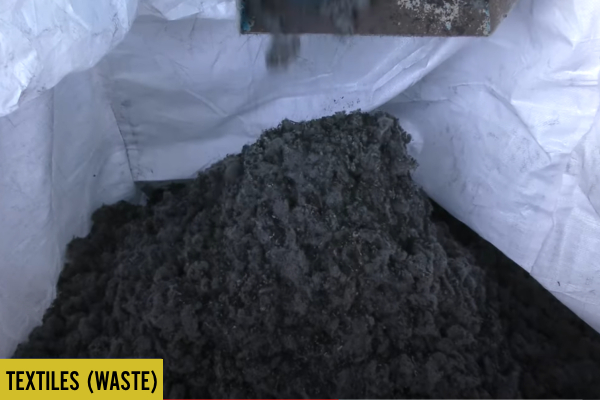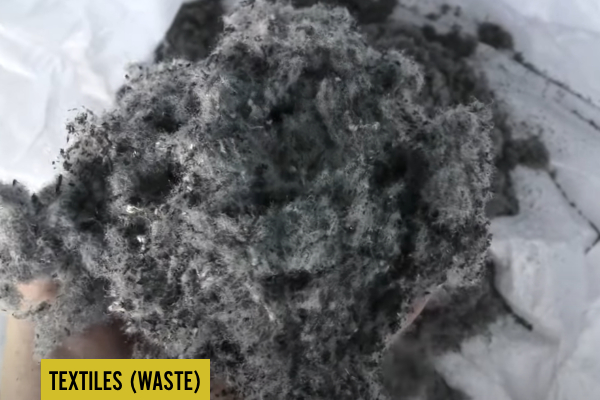Global textile production has been constantly increasing for decades and is expected to increase even more rapidly in the near future.
Once upon a time, clothes represented basic necessities and textile production limited itself to responding within the limits of this primary need.
Today, however, clothes have become consumer and fashion items and as such their life is increasingly shorter. At the same time, their material composition gives you
It was initially based on 100% natural fibers such as wool or cotton, but today it is increasingly more complex.
In fact, 63% of fibers derive from petrochemical products whose production and disposal involve significant carbon dioxide emissions. The remaining 37% is dominated by cotton, the cultivation of which requires enormous quantities of water and is often accompanied by the intensive use of pesticides.
The fabrics are then subjected to treatments such as finishing, dyeing and printing, which cause further exploitation of natural resources and further emissions of CO2 and fine dust.
For our planet these rhythms have now become unsustainable, for this reason it is necessary to increase the reuse practices and textile recycling technologies, aimed not only at reducing the production of virgin fibers but also at optimizing the use of dyes and production resources.
The reality is that recycling textile fibres, as today composed of mixed materials, is very complicated. The growing and constant number of studies and experiments in recent years in this regard is not surprising.
Among the various technologies known today for the recycling of textile fibres we can mention some of the most used.
Recycling of textile fibers with mechanical recycling system:
It constitutes the most widely used form of recycling of textile fibers and is based on the fraying of the material and the subsequent parallelization of the fibers in a belt which subjects them to spinning. It may involve chemical treatments as in the case of carbonizing wool. Usually this system of textile fiber recycling degrades the materials so it can only be carried out a limited number of times. The yarn obtained is made up of a mix of recycled and virgin material to ensure the degree of resistance and quality necessary for use. It is mainly used for the recycling of wool and cotton. Mixed and synthetic materials, such as polyester and acrylic, can be recycled in an open cycle process and the material obtained is used for the production of TNT or padding for insulating materials.


Recycling of textile fibers with thermomechanical recycling system:
This process allows the fusion of synthetic fibers which can then be spun again or reshaped into other shapes. Many difficulties are encountered in the recycling of elastane fibres. However, thermomechanical recycling is rarely applied as it involves high processing costs.
Recycling of textile fibers with Chemical recycling system:
According to research, chemical recycling offers significant opportunities to keep materials in a closed cycle, however it contributes to the recycling of a modest 1% of textile waste (2017 data)
There are two types of chemical process for textile recycling: the recycling of monomers and the recycling of polymers. In monomer recycling, the polymer chain is disassembled to obtain monomers that can be transformed into new virgin polymers through polymerization (the presence of dyes and critical chemicals can, however, hinder the closed-loop recycling process).
The chemical process can, in principle, be applied to most textile fibres, however, monomer recycling is currently only used for synthetic fibres.
In polymer recycling, the textile fibers are broken down through mechanical processes such as shredding. The chemical dissolution then occurs with specific (often dangerous) solvents, while color residues can be removed with sodium hypochlorite which certainly presents environmental problems but does not degrade the polymer.
Many researchers have wondered about the possibilities of integrating the technical recycling to which textile waste is usually subjected with biological recycling.
In the first case, one could even hypothesize the use of textile waste as an alternative to biomass for the production of biofuels.
As is known, biofuels are generally obtained using waste or by-products from the food and agricultural industry, thus avoiding taking away soil from the cultivation of food products. However, it is difficult to depolymerize these cellulose-rich materials also due to the presence of other specific plant contaminants such as lignin. Waste textiles can be viewed as a cellulose-rich feedstock for the second generation biorefinery in an open loop recycling process. The contaminants in this case are any non-cellulosic fibers and the chemical products used for dyeing and finishing. In short, a point of view that is usually little considered.

Other forms of textile recycling:
As already underlined several times, the greatest limitation for all these technologies lies in the treatment of multi-material fabrics. Although there are very promising new technologies capable of separating the most common blend of cotton and polyester, currently, the only truly ecological methods capable of overcoming this limit are composting and verminal composting. Two processes that do not give life to a new textile material but which are nevertheless noteworthy because they eliminate waste by giving the waste a new function.
With composting, different types of fungi and bacteria are exploited to degrade organic waste into a fertilizer very rich in nutrients. With verminal composting, that process is speeded up by adding living creatures like earthworms. The fertilizers obtained from both of these processes will not generate new fibers but can close the circular economy circle by nourishing the land dedicated to cotton production.
Another operation that is always valid and does not require the use of any technology is the reduction of textile waste to rags for cleaning and drying. Obviously, only fabrics with a high water absorption capacity can be recycled in this way, and it is a practice that only partially addresses the sustainability needs of the textile industry, but it is a simple and effective process to keep into account.
The Ghirarduzzi Company is indirectly involved in the textile recycling sector, as it is always attentive to environmental issues and to the research and study of new techniques and design of new recycling machinery, has adapted its experiences to the recovery of textile fiber from ELT processing waste.
Thus obtaining, from a waste product whose only destination was the landfill, 2 secondary products that can be used as a source of energy in the steel and cement sectors.
Below is the link with the results obtained.
https://www.youtube.com/watch?v=cjy1zJgcaBk







